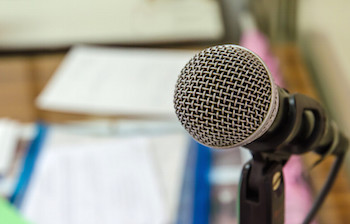When trying to write a song that differs from your last one, don’t forget the importance of a new starting note.
_____________
 Get “The Essential Secrets of Songwriting” 10-Ebook Deluxe Bundle. 11 Songwriting Principles That Will Turn Your Writing Around – Guaranteed.
Get “The Essential Secrets of Songwriting” 10-Ebook Deluxe Bundle. 11 Songwriting Principles That Will Turn Your Writing Around – Guaranteed.
_____________
If you find that all of your song melodies sound uncomfortably similar, the problem is likely rooted in how you start them. If you get melodic ideas by improvising tunes over a chord progression, but everything comes up sounding like the song you’d just written last week, you’re likely doing one of the following:
- You’re using similar chord progressions from song to song. You might find yourself always resorting to a I-vi-ii-V-I (C-Am-Dm-G-C) progression, or something similar.
- You’re starting all your melodies on the same scale degree. For example, you might find that you tend to start your melodies on the 3rd note of the tonic chord.
- You’re using similar rhythmic ideas from song to song. In other words, you may find that you like to start melodies by lingering on the first note, then following it with rapid notes that move upward.
- You’re writing all your songs using a similar tempo.
The obvious solution here is to be sure to change your approach as much as possible from one song to the next. Use progressions that don’t bear much resemblance to the last song you wrote, develop a different backing rhythm, feel and tempo.
And don’t forget the importance of starting your new melody on a different first note from your previous song.
The best analogy here is to think about going for a walk. If you start all your walks from the same location, at least part of your walk will look the same. The best way to take a walk in which you see new things is to start from a new location.
It helps to come up with a chord progression that doesn’t simply mimic what you did in last week’s song. One great idea is to try starting on a non-tonic chord, something like: ii-V-I-vi-IV-V-I-V (Dm-G-C-Am-F-G-C-G), then try this:
- PLAY IT! Play through the progression several times to get familiar with it.
- CHANGE VOICINGS. Try playing through the progression using different chord voicings, both high and low. By moving the chords higher and lower, you’ll start to hear melodic ideas being implied by the upper notes of your voicings.
- HUM A STARTING NOTE. This should be either the 1st, 3rd or 5th note of your first chord. Play through your progression several times, improvising melodic shapes and ideas.
- IMPROVISE. Start the progression again, and improvise melodic shapes starting on a different note. Keep playing through your progression, improvising new ideas.
It’s important to record what you’re singing here. Don’t necessarily try to create entire melodies at this point. You’re simply trying to get a hooky idea that serves as a starting point for something that can grow into a larger melody.
And of course, the point here is that you’re trying to create something that doesn’t bear much resemblance to your most recent songs.
It can sometimes help, in this method, to concentrate on purposely trying to create something that goes in an entirely new direction. The obvious benefit to this is that you avoid being labeled. Everything you write has a new sound, a new feel, a new approach and a new mood.
And it can often start by simply determining to begin with a new note.
_____________
 Written by Gary Ewer. Follow Gary on Twitter
Written by Gary Ewer. Follow Gary on Twitter
 Use your iPad or other PDF-reading device to improve your songwriting technique. “The Essential Secrets of Songwriting” eBook Bundle shows you every aspect of songwriting: how to write better melodies, chords, lyrics, and more.
Use your iPad or other PDF-reading device to improve your songwriting technique. “The Essential Secrets of Songwriting” eBook Bundle shows you every aspect of songwriting: how to write better melodies, chords, lyrics, and more.











Pingback: Interesting Links For Musicians and Songwritiers – June 24, 2015 | Creative Music | Inspiring Musical Creativity